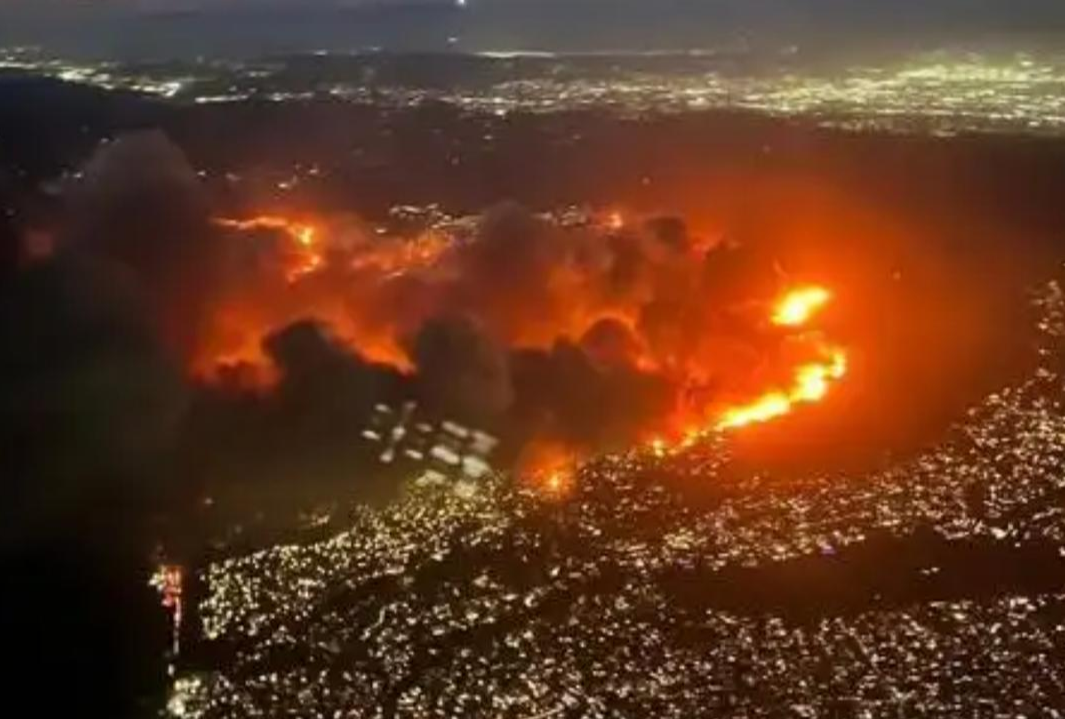US Wildfire Sparks Economic Concerns
Advertisements
The devastating wildfires that erupted on January 7 have already consumed over ten thousand structures, with projections suggesting that, if left uncontrolled, nearly thirty thousand more homes could meet the same fate. As firefighters battle the flaming infernos, the scope of devastation swells not only in terms of property loss but also in emotional and psychological tolls on thousands of families who have been displaced.
In Los Angeles, the fires rage across five locations, with the most relentless destruction occurring in the prestigious neighborhoods often associated with the glitz and glamor of Hollywood. It is heartbreaking to think that the lavish homes of celebrities and prominent figures stand in the line of fire, serving as a stark reminder of nature's indiscriminate power.
The financial ramifications of these wildfires are staggering. According to estimates from AccuWeather’s chief meteorologist, the economic toll could range between an astonishing $135 billion and $150 billion—amounting to nearly 4% of California’s annual GDP. To put it into context, this is reminiscent of past disastrous natural events in the U.S. but exceeds them in losses. For instance, Hurricane Katrina in 2005, known as one of the most destructive hurricanes in American history, resulted in approximately $125 billion in damages, while the infamous Northridge earthquake in 1994 caused around $30 billion—a sum that now seems paltry compared to the wildfire loss.
As the cause of the wildfires remains under investigation, certain natural phenomena have been cited as contributing factors. The extreme weather conditions of 2024 led to an unusual surge of vegetation in Southern California's mountainous regions, followed by severe drought conditions that essentially dried out this vegetation, making it a highly combustible fuel for flames. Compounding this issue is the notorious Santa Ana winds—a fierce, dry wind from the desert that ignites flames and accelerates their spread. However, it is essential to recognize that attributing the entire blame to nature alone would be simplistic.
These wildfires have laid bare several inadequacies within the American disaster response framework, particularly regarding wildfires, which are not rare occurrences in California. The state sees substantial wildfire activity on a biennial basis, prompting one to question why no proactive measures were established beforehand. The irony is that preemptive action is being taken not by fire services or local governments but by insurance companies themselves.

Starting in 2017, California faced increasingly frequent wildfires, yet the government did little in terms of response. Ironically, budget cuts to fire services ensued, exposing the state’s vulnerability. As losses soared with each fire, many insurance companies chose to withdraw, creating a precarious situation for residents dependent on such coverage. Just two months before the recent disasters, some insurers utilized big data analytics to predict high wildfire risks and withdrew policies, sparing themselves from impending financial ruin but leaving homeowners in a lurch.
Despite this foresight, the insurance losses from these fires are projected to exceed a monumental $20 billion, evidencing why this is shaping up to be one of America's most catastrophic fire insurance events in history. Alarmingly, while insurance companies acted preemptively, the local government exhibited a lack of initiative to bolster protections and mitigate wildfire damage.
Even more baffling is the occurrence of budget cuts made by the Los Angeles mayor in the midst of this crisis. In 2024, as fires raged on, it seems incomprehensible to cut funding for fire services. Just a day into the wildfires, reports emerged of fire hydrants running dry. Some firefighters resorted to using traffic cones to scoop water—a surreal image that symbolizes the systemic failures at play.
Neglecting infrastructure maintenance and resource availability has exposed the regions' precarious situation. Water reservoirs are aging, and with bureaucratic underfunding, there has been a severe shortage of resources to ensure effective firefighting capabilities. In a state known for its thriving population and luxurious lifestyle, a significant number of residents find themselves living in areas surrounded by dense vegetation, intensifying their risk. Data from The Washington Post highlights that around 40 million households reside in fire-prone zones, placing them squarely in harm's way when disaster strikes.
Deteriorating electrical infrastructure compounds the problem; many power lines remain wooden and susceptible to catching fire from sparking connections, resembling giant matches awaiting a strike. This chaos brings to mind other global wildfire incidents. A notable contrast lies in the 2022 Chongqing fires, where community solidarity flourished as locals banded together to assist during the emergency—a display of human resilience and unity that starkly counters the disarray seen in Los Angeles.
Hypothetically, if American regions prone to wildfires were to establish well-developed emergency response plans, resources like firebreaks would be in place, water-storing systems established, and budgets intelligently structured to avert such rampant devastation. Effective management would enable better preparation and response, ensuring that even if a fire did spark, essential living arrangements could be protected and civilians provided with support to weather the storm. Humans face nature's fury with humility; however, through strategic preparation and collective strength, the impact of such adversities can be contended with.
The events unfolding in California may not mark the last wildfire, leaving one to ponder whether proactive measures will follow this disaster or if the cycle of neglect will continue. The path forward necessitates greater foresight and stronger commitment to resilience planning within affected communities.
Leave a Reply
Your email address will not be published. Required fields are marked *